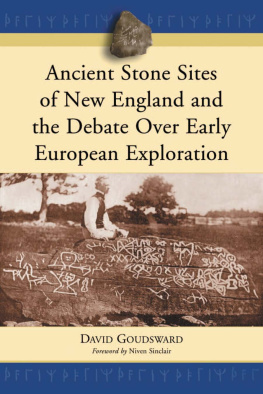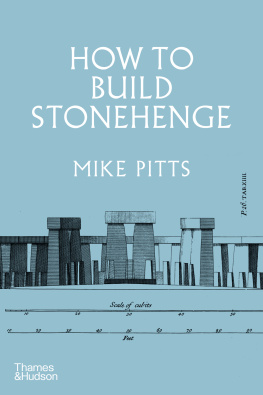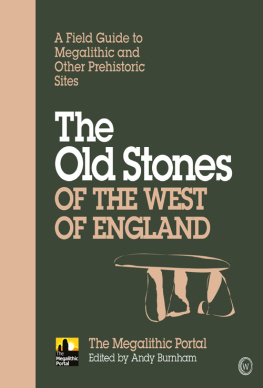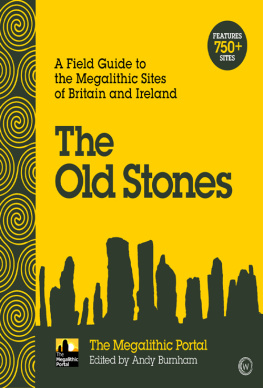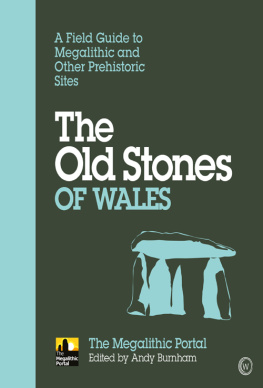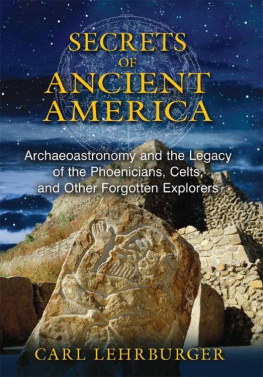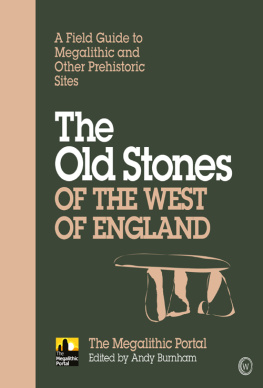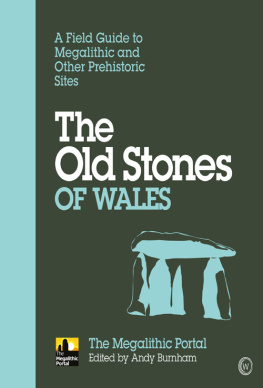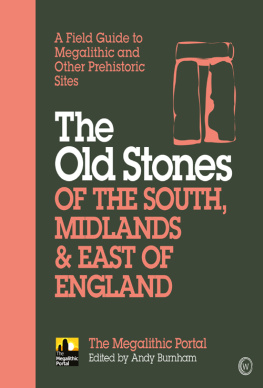
Ancient Stone Sites of New England and the Debate Over Early European Exploration
David Goudsward
Foreword by Niven Sinclair

McFarland & Company, Inc., Publishers
Jefferson, North Carolina
LIBRARY OF CONGRESS CATALOGUING DATA ARE AVAILABLE
BRITISH LIBRARY CATALOGUING DATA ARE AVAILABLE
e-ISBN: 978-1-4766-0486-2
2006 David Goudsward. All rights reserved
No part of this book may be reproduced or transmitted in any formor by any means, electronic or mechanical, including photocopyingor recording, or by any information storage and retrieval system,
without permission in writing from the publisher.
Cover photograph: Seth Eastman on the Dighton Rock, circa 1853 (from Henry Rowe Schoolcrafts Indian Tribes of the United States)
McFarland & Company, Inc., Publishers
Box 611, Jefferson, North Carolina 28640
www.mcfarlandpub.com
To my beloved wife, Heather Bernard.
Her support of this project was vital, if not necessarily voluntary.
Acknowledgments
The following people went far beyond the call of duty in assisting me with this project and I am very grateful: Terry Deveau, Elizabeth Lane, Robert Stone, Malcolm Pearson, and Manuel Luciano da Silva, M.D.
Help was also provided by the following: Norm Barstow (Hadley Farm Museum, Hadley, Massachusetts), Kathleen Borelli, Jane Buchanan (M.N. Spear Memorial Library, Shutesbury, Massachusetts), Chris Cantrell (Museum Village at Old Smiths Clove, Monroe, New York), Leon Christoforo (Leominster Historical Society, Leominster, Massachusetts), Chuck Drayton, the GAR Memorial Library (West Newbury, Massachusetts), Scott Goudsward, the Groton Public Library (Groton, Connecticut), Hampton Historical Society (Hampton, New Hampshire), Carol A. Hanny, Ed Hood (Old Sturbridge Village, Sturbridge, Massachusetts), Stephen Howes (Kingman Tavern Historical Museum, Cummington, Massachusetts), Diane Kachmar (Florida Atlantic University, Boca Raton, Florida), David Kruger (New Hampshire Society of Genealogists), Jody LaFerriere, Greg Laing (Haverhill Public Library, Haverhill, Massachusetts), Joanne Lambert, Jeannine T. Levesque (Leominster Public Library, Leominster, Massachusetts), Richard Lynch, Lynn Museum (Lynn, Massachusetts), Virginia Moore (J.V. Fletcher Library, Westford, Massachusetts), and Vance Tiede. Thanks to all of them.
Foreword by Niven Sinclair
History needs to be rewritten.
The North American continent is awash with evidence of pre Columbian settlers who left their imprint on the landscape and their writing on stones and boulders as markers for those who followed or, occasionally, just for their own amusement. Ogham and runic inscriptions tell a story of Celtic and Norse penetration into the very hinterland of the New World (North and South America).
These early seafarers must have felt very much at home as they found one water-course leading into another with a never-ending string of lakes replete with fish and water fowl to meet their needs. They had found a paradise rich in wild grapes, blueberries and huckleberries so teeming with game that the word wild seemed to be singularly inappropriate to describe animals which had yet to learn to fear the hunter.
But was there another side? Was there a darker side? Were human sacrifices being made to placate gods of fertility? What do places like Mystery Hill and the Gungywamp complex have to tell us? Well, David Goudsward, in his book Ancient Stone Sites of New England and the Debate Over Early EuropeanExploration (which seems to embrace every ancient stone in New England), goes a long way to providing us with the answers. This has obviously been a labor of love. He has spent years scrambling over rock faces, following rivers to their sources, crawling into creepy caves and prostrating himself on sacrificial slabs in order to satisfy himself as to which direction the blood would flow once the sacrifice had been made, be it animal or human.
History is all around us if we care to look, and if we look, we will quickly discover that it didnt begin with Christopher Columbus sailing the ocean blue and discovering America in 1492. Quite apart from the fact that he was a johnnie-come-lately, Columbus never set foot on the continent of North America. Nor did it begin with the Pilgrim fathers. It is thought to have begun with Paleolithic nomads who crossed the land bridge between Siberia and Alaska some 150,000 years ago. Since then, there have been successive waves of immigrants from Asia (including China and Japan), from Africa as can be seen in the features of the great Olmec statues in Mexico, and from Europe as can be gathered from the burial remains of the red paint people found from Maine to Labrador, as well as Celtic graves, runic inscriptions and such strange structures in North Salem, New Hampshire, or Newport, Rhode Island.
Dave Goudsward has confined his research to New England, but what a wild wealth of information he has given us. Kiplings famous line, What should they know of England who only England know? should be paraphrased to What do they know of New England until Ancient Stone Sites of New England has been read? Dave deserves a medal. This is a book which enriches and enlightens in equal measure.
Niven Sinclair
London, England
Niven Sinclair has devoted over three decades to researching and advocating the authenticity of the 1398 transatlantic voyage of his ancestor, Henry Sinclair, 1st Earl of Orkney and is an active supporter of the Clan Sinclair Study Center and Niven Sinclair Library at Noss Head, Caithness, Scotland. He is a businessman, historian, philanthropist, author, Fellow of the Society of Antiquaries of Scotland and a member of English Heritage.
Introduction
Megalith, a noun, refers to the large stones used in various prehistoric architectures, predominantly in Western Europe during the second millennium BC. As the mysterious ancient stones of New England have become more popularized, the adjective megalithic has become more generic in usage, referring not only to the large stone constructions that comprise site features at such sites as Gungywamp, Mystery Hill and Upton, but also to the features found subsequently (astronomical alignments, inscriptions, etc.), as well as sites associated with such interests. So, even though they are not megalithic in the purest chronological or architectural sense, you will find in these pages discussions of such sites as the Newport Tower, Manana Island and Dighton Rock.
This book is not a comprehensive list of every site in New England associated with possible preColumbian contact with Europe. Such a project may be well beyond any persons ability to compile. By best estimates, stone chambers alone exceed 500 in number, and most every town in New England has at least one mysterious carving, structure or odd rock that is identified as Native, Norse or of some other origin aligning with the theories that have been suggested.
I have attempted to pick some of the best known (or most notorious) sites, as well as a few lesser known examples. What they have in common, aside from the controversy inherent in this field of study, is some reflective aspecta stone mirror, if you willthat echoes not only the trends in research at any given point in American history but also the beliefs of the researchers.
Next page
